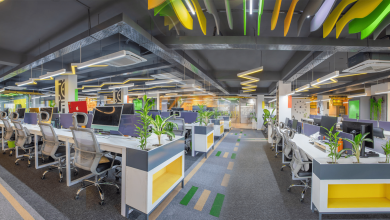The Rupgaon project in Rupganj is a Knowledge Exchange Center focused on environmental ecosystems, a place where individuals can learn and educate themselves. The envisioned center serves as a self-learning hub, providing comprehensive information and resources about our environment.
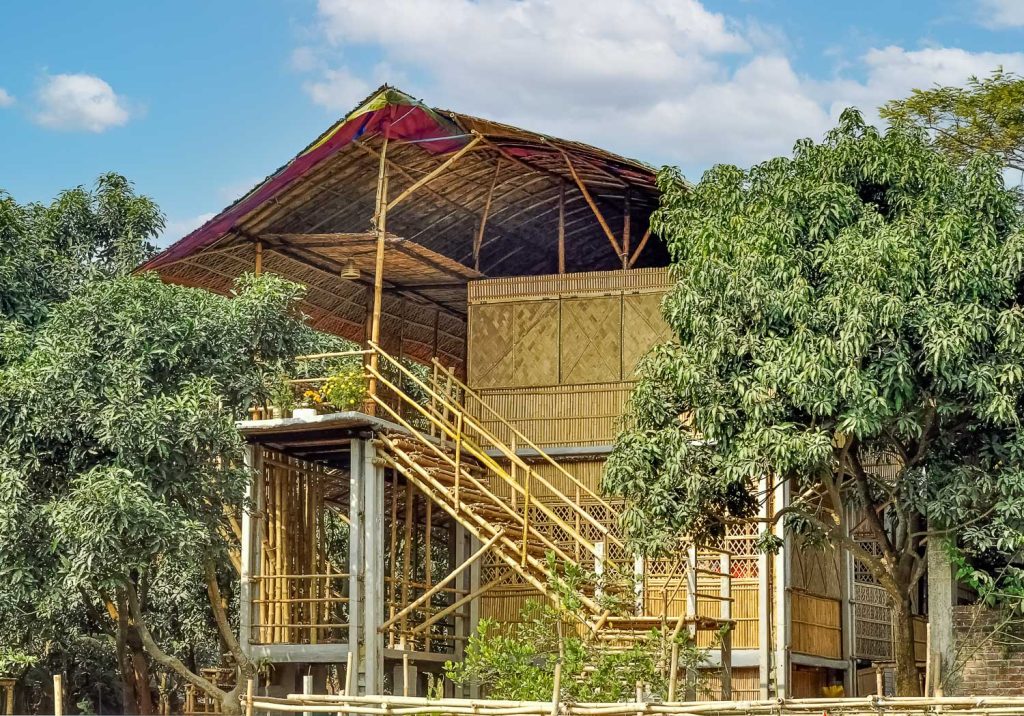
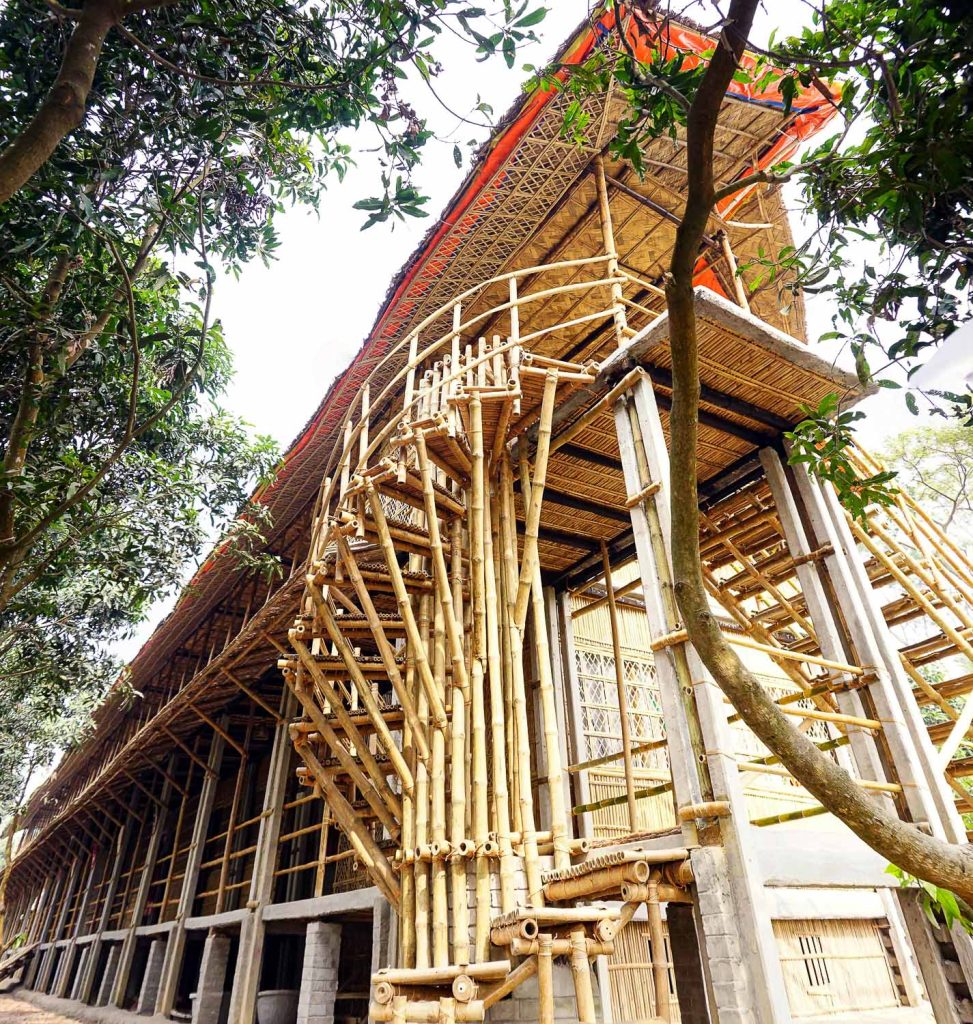
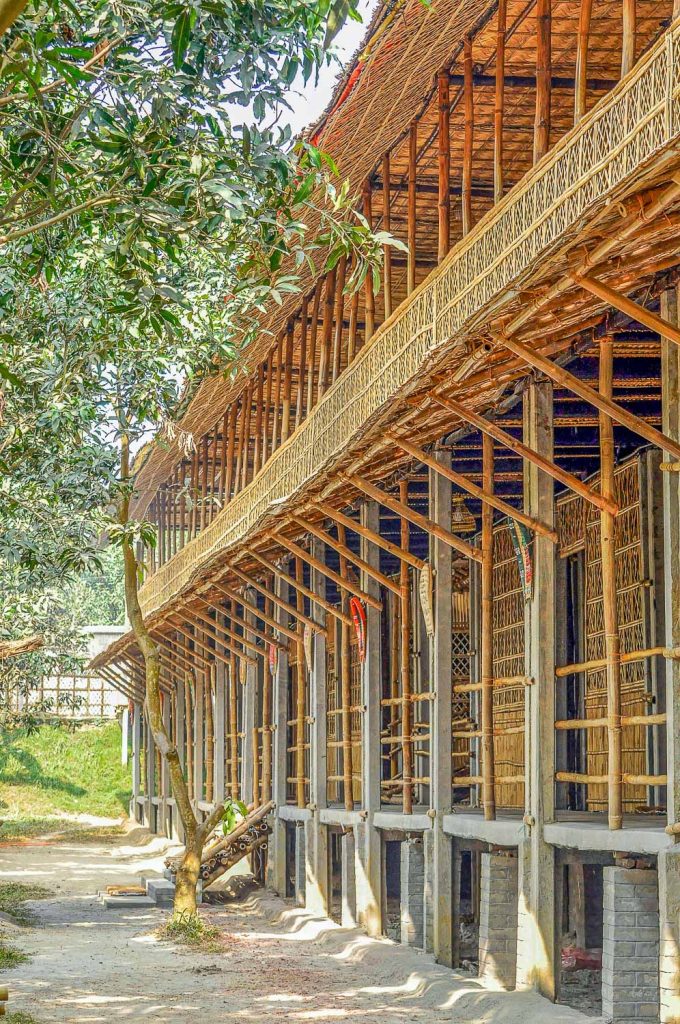
The construction of the project commenced on November 21, 2021, marking the beginning of an exciting journey. Significant progress has been made, and as of January 15, 2023, the project has reached a partial completion stage. Although the major construction milestones have been achieved, some remaining detailing work is currently underway. The design team behind the project are: Ar. Fatiha Polin, Ar. Fazla Rabbi, Ar. Sumaiya Amin and Architecture Student Ferdous Khan. Together, they form a dynamic group, united by their enthusiasm for creating innovative, environmentally conscious designs. The team strive to make a positive impact on the world through their sustainable architectural endeavors.
From the architect, initially, the project encountered challenges related to the site. The site itself was situated eight feet below the road level and had a relatively long north-south orientation, while being narrow in the east-west direction. Furthermore, the site had a unique topography, starting from the road and descending three steps before blending into the surrounding landscape. “To accommodate the design requirements, a significant amount of soil had to be filled into a 192-foot-long, 95-foot-wide, and 8-foot-deep space. Although this process incurred substantial expenses, we managed to elevate the structure by 2 to 3 feet, resulting in a two-story building connected by ramps and multiple staircases”, says architect Fazla Rabbi. “Another significant challenge revolved around the architectural design itself. The length of the structure measured approximately 179 feet, with a width of 20 feet. The most demanding aspect was the roof design, as crafting a single long roof spanning the entire structure proved to be a difficult task. We collaborated closely with skilled craftsmen for an extended period, engaging in numerous iterations and refinements until we achieved the remarkable outcome visible today.”
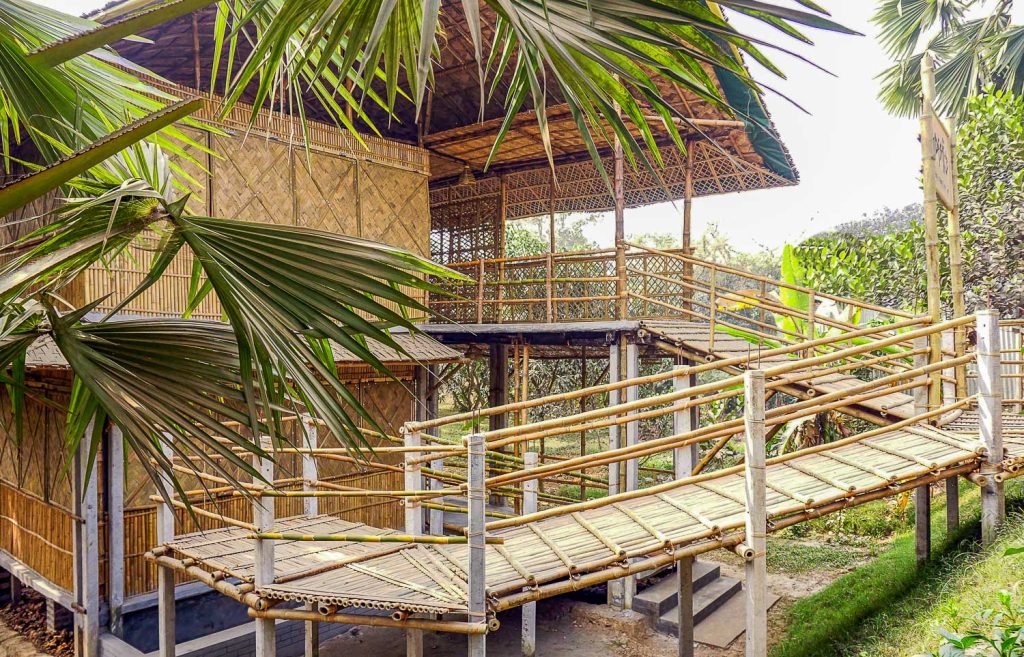
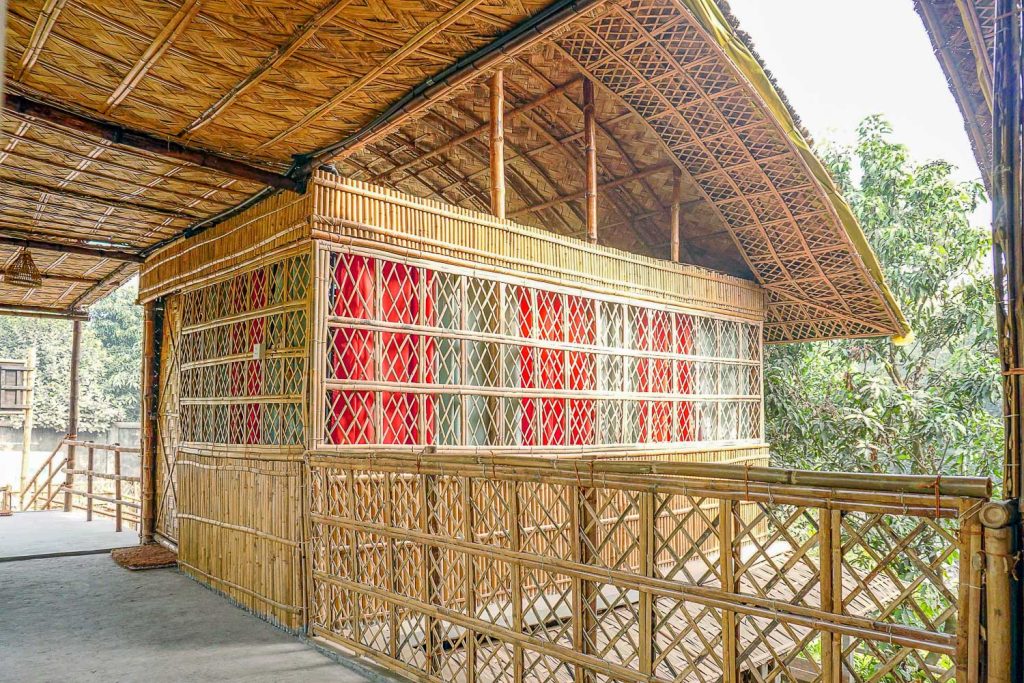
The upper level of the building comprises several functional spaces designed to cater to various needs. These include: one office room: this dedicated space serves as a central hub for administrative tasks and facilitates smooth operation of the facility. Seven classrooms: these classrooms are versatile and can accommodate different sessions or educational activities. Four of these classrooms have been designed to also function as accommodations, providing a convenient option for overnight stays. One library room: this room also serves as a meditation area, promoting a sense of calm and reflection. Lower Floor: The lower floor of the building includes one display center, one multipurpose space/seminar hall, one cafeteria with kitchen and one room for service/caretaker.
The surrounding houses, passed down from generation to generation, showcased the timeless beauty of clay, bamboo, and palm wood, embodying the wisdom of our ancestors. With this inspiration, the team embarked on a mission to create a structure that would blend harmoniously with its natural surroundings. “We crafted a place that resonated with the spirit of the community, paying homage to the wisdom and craftsmanship of our predecessors. The process of building became an opportunity to unite the present with the past, and to pass on our sustainable practices to future generations. The resulting establishment is not only easy to build but also simple to maintain. With materials that are abundant and easily replaceable, we’ve ensured that any necessary repairs or replacements can be carried out without causing undue harm to the environment”, shares Architect Sumaiya Amin.
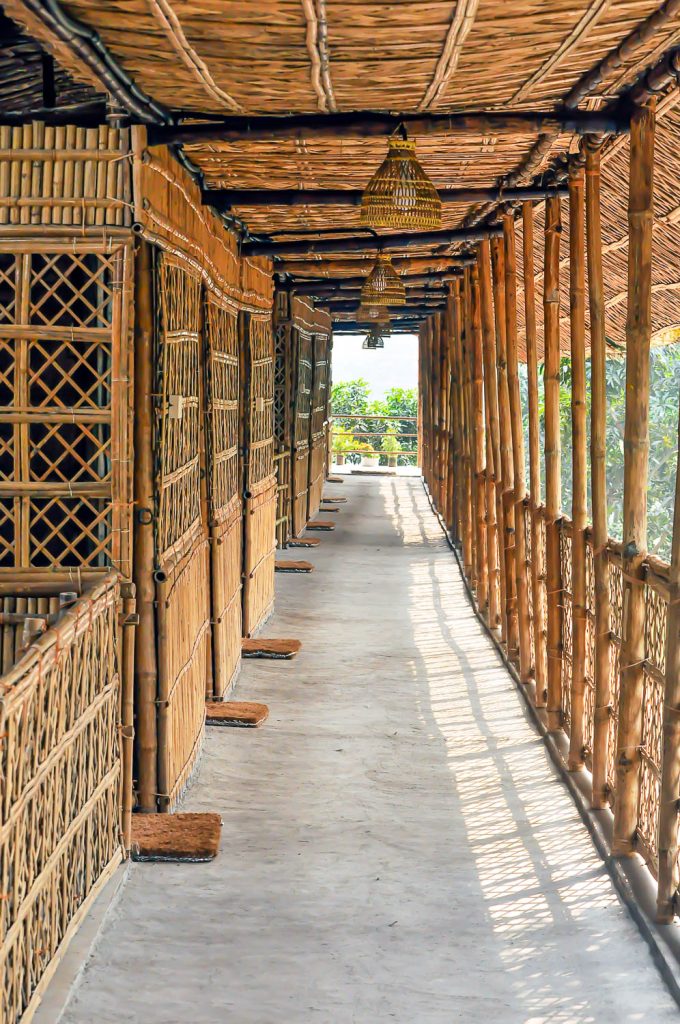
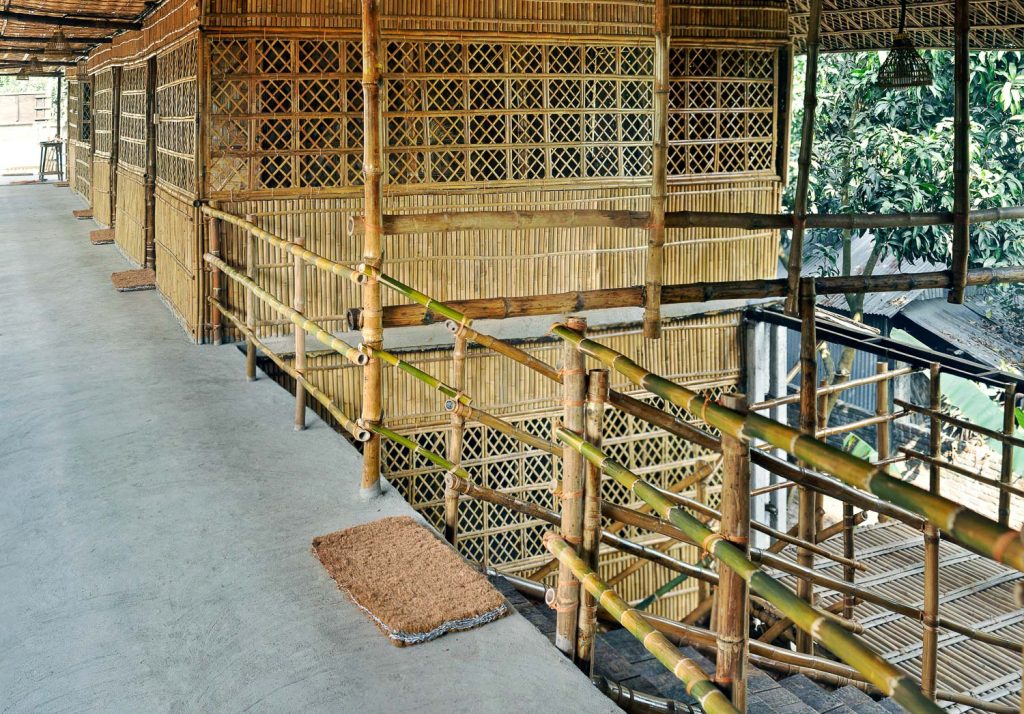
To maintain the authenticity and traditional craftsmanship of the structure, the team made a deliberate decision to avoid the use of iron nails, pins, or iron strings in its construction. Instead, the entire framework of the building was meticulously assembled and bound by the skilled hands of craftsmen, employing only locally sourced ropes. This approach not only added to the cultural and aesthetic integrity of the center but also showcased the expertise and artistry of the craftsmen involved. By relying solely on traditional binding techniques and local ropes, the team achieved a harmonious blend of sustainable materials and time-honored craftsmanship, creating a truly unique and captivating environment for visitors.




